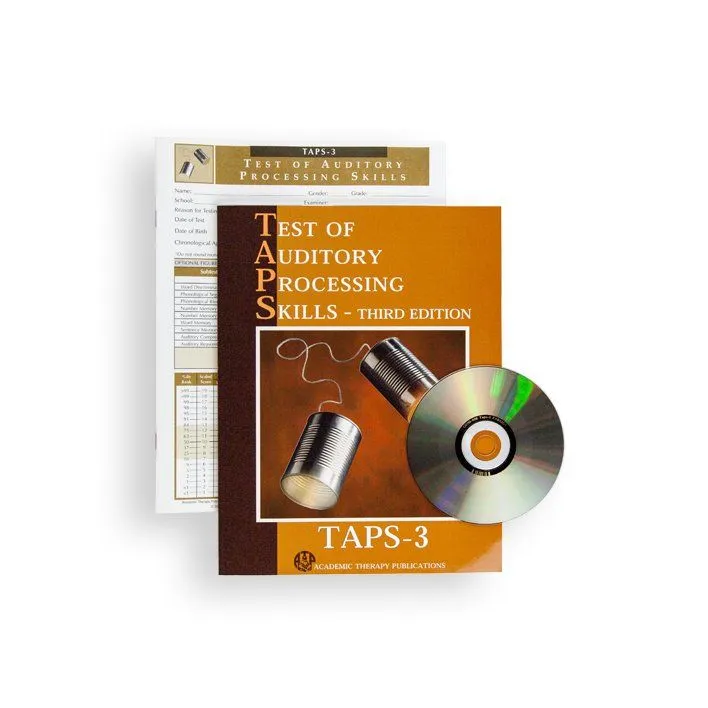(TAPS-3) Test of Auditory Processing Skills, Third Edition
(TAPS-3) Test of Auditory Processing Skills, Third Edition
From $25.00
To $350.00
In stock
Sign In to download sample materials.
Don't have an account? Register Here.
About This Product

BY NANCY A. MARTIN AND RICK BROWNELL
This useful battery can help you diagnose auditory processing difficulties, imperceptions of auditory modality, language problems, and/or learning disabilities in both children and teens. The TAPS-3 offers seamless coverage for ages 4 to 18 years. Used by psychologists, speech pathologists, language specialists, learning specialists, diagnosticians, and other testing professionals, it measures what children and teens do with what they hear.
The TAPS-3 includes the following subtests:
- Word Discrimination
- Phonological Segmentation
- Phonological Blending
- Numbers Forward
- Numbers Reversed
- Word Memory
- Sentence Memory
- Auditory Comprehension
- Auditory Reasoning
The order of the subtests reflects a developmental progression from easiest to most difficult tasks. The Auditory Reasoning subtest is specifically designed to tap auditory cohesion, a higher order process. An optional task, Auditory Figure–Ground, is available separately on CD. It can be used to identify possible attention difficulties and determine how the child’s auditory processing works in “real-world” situations.
The test provides not only an overall score, but three cluster scores as well: Basic Auditory Skills, Auditory Memory, and Auditory Cohesion. Some subtests offer partial credit to more accurately reflect the child’s auditory abilities.
Untimed, the TAPS-3 can be individually administered in about 1 hour and scored in 15 to 20 minutes. The Manual provides detailed scoring criteria, with alternate acceptable answers when applicable. Standard scores are generated for individual subtests. Overall and cluster scores take the form of percentile ranks, standard scores, and age equivalents. Norms, based on data from more than 2,000 students, are now nationally stratified to match U.S. Census data in regard to gender, ethnicity, residence, geographic area, and level of parental education.




